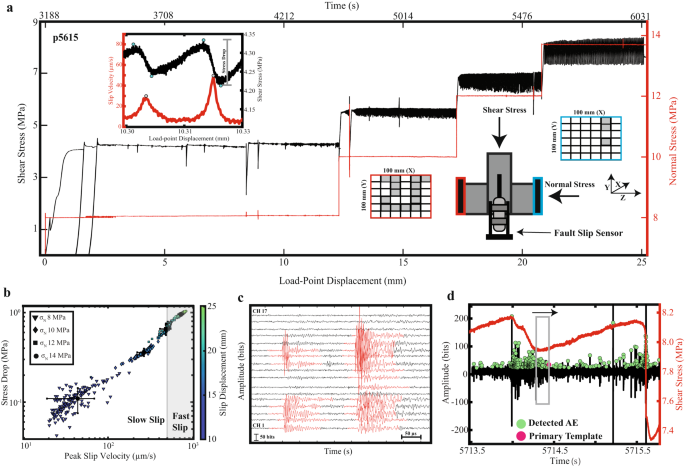Phys.org October 25, 2023
An international team of researchers (USA – UT Austin, Pennsylvania State University, University of Nevada, Italy) measured waveform similarity and pairwise differential travel-times (DTT) between acoustic emission (AEs) throughout the seismic cycle. AEs broadcasted prior to slow labquakes had small DTT and high waveform similarity relative to fast labquakes. They showed that during slow stick-slip, the fault never fully locked, and waveform similarity and pairwise differential travel times did not evolve throughout the seismic cycle. In contrast, fast laboratory earthquakes were preceded by a rapid increase in waveform similarity late in the seismic cycle and a reduction in differential travel times, indicating that AEs began to coalesce as the fault slip velocity increased leading up to failure. According to the researchers their observations point to key differences in the nucleation process of slow and fast labquakes and suggest that the spatiotemporal evolution of laboratory foreshocks is linked to fault slip velocity… read more. Open Access TECHNICAL ARTICLE

Experimental setup and evolution of laboratory earthquakes. Credit: Nature Communications volume 14, Article number: 3859 (2023)